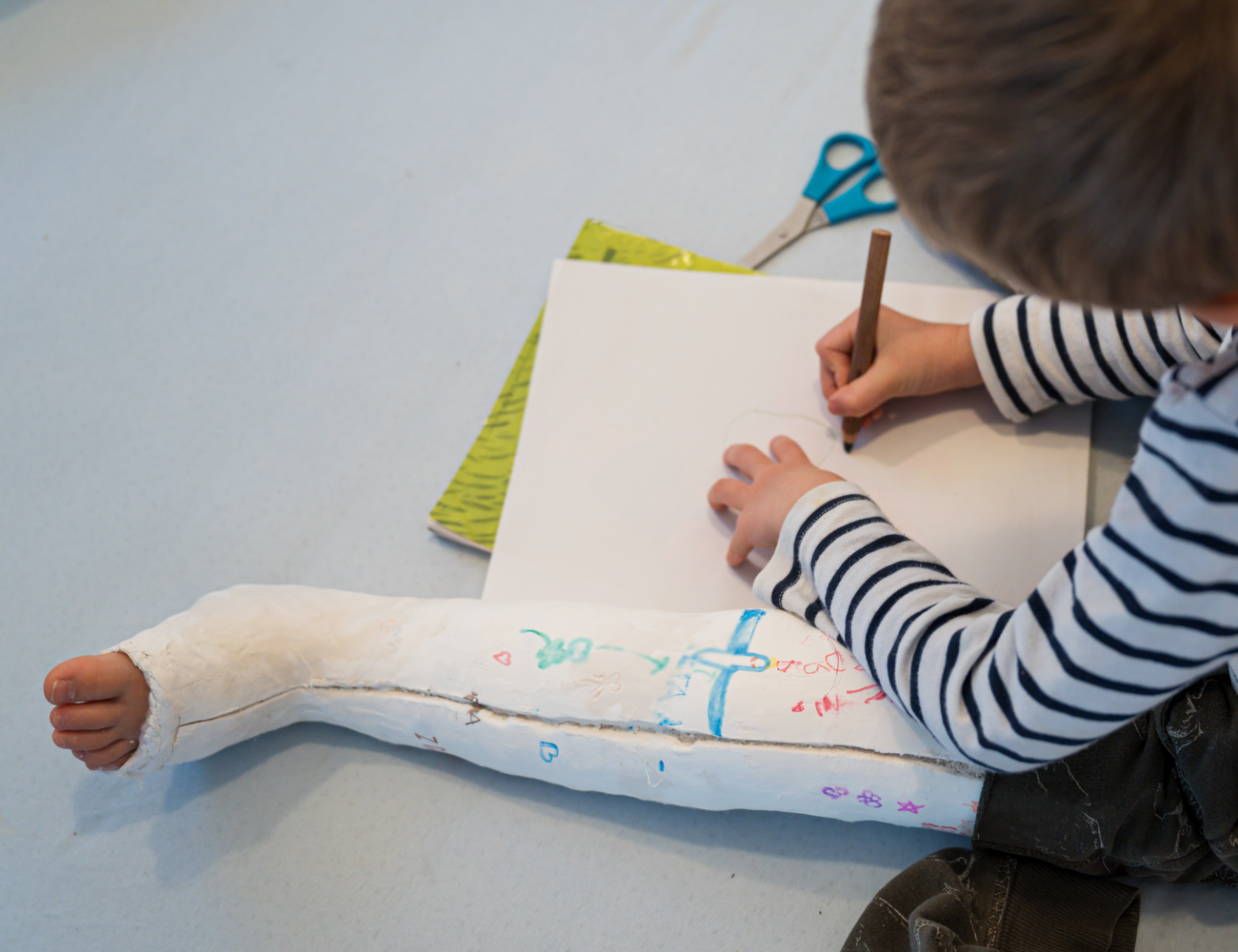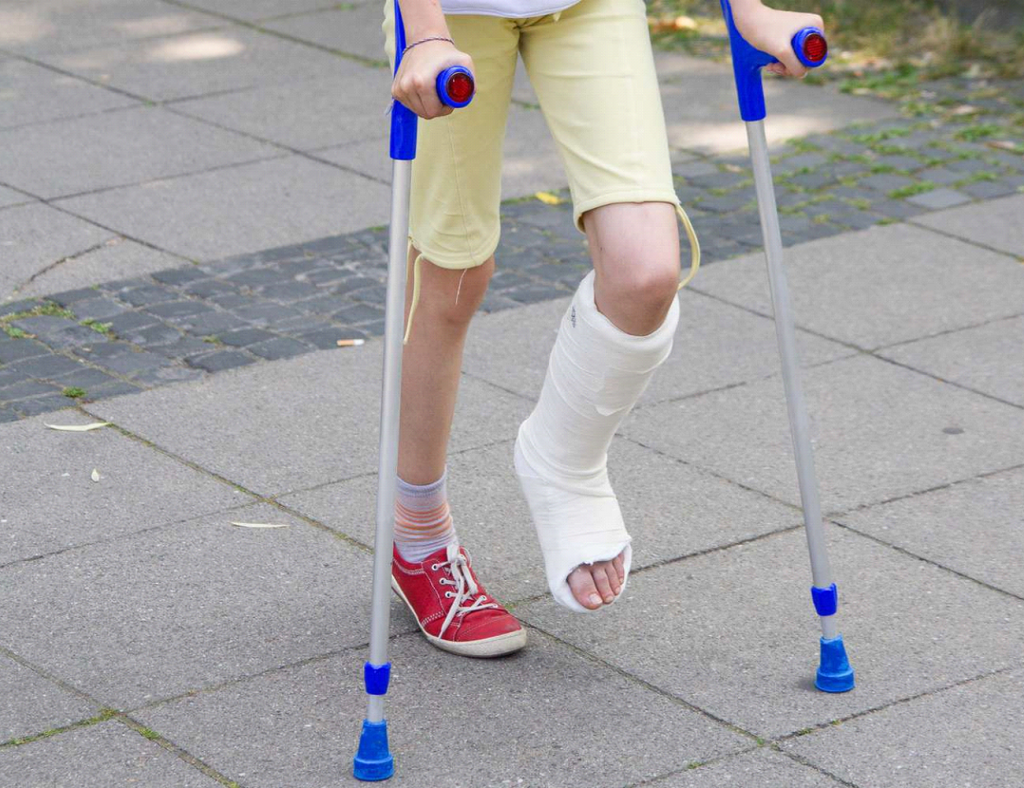
Pediatric Orthopedics: Get to know the main orthopedic problems in children.
Pediatric Orthopedics: Issues, Treatments, and Prevention.
Childhood is a critical phase for the growth and development of children. As such, it is a period where significant changes occur in their musculoskeletal systems, which develop and adapt to the challenges of daily life.
Therefore, young children are more prone to experiencing certain orthopedic conditions due to the continuous development of their bones and muscles until the end of adolescence. Regarding World Children’s Day, in this article we will recall some of the most common diagnoses, presenting treatment and prevention solutions.
During growth…
During growth, it is crucial to take care of the developing musculoskeletal system to ensure healthy progression and prevent orthopedic problems. There are some diagnoses that, when identified in time, can be easily treated with the support of specialized products. Discover which ones!
Flat feet or Planus feet.

Pediatric flatfoot is a common condition that can be present since birth or develop during childhood. This condition affects the arch of the child’s foot: instead of having a pronounced arch in the middle of the foot, the sole of the foot comes into almost complete contact with the ground.
To identify flat feet in a child, you should check if, with the foot bearing weight, the arch is well-defined and slightly raised from the ground, or if, on the other hand, the entire surface of the foot touches the ground. When identified as early as possible by a pediatric orthopedic specialist, this condition can show significant improvements and outcomes.
The treatment of pediatric flatfoot depends, of course, on the severity of the condition. But in most cases, the treatment involves the use of a specialized orthopedic insole designed for this condition in children – with support in the arch of the foot to gradually position it correctly.
Hip dysplasia in infants.

Hip dysplasia is a slightly more complex condition and is usually identified shortly after birth. It involves an incomplete development of the “socket” in the pelvic bone where the head of the femur (thigh bone) should fit. This causes the femoral head to constantly “dislocate” with the natural and constant movement of the baby’s legs.
For the treatment of this condition, the pediatric orthopedist will prescribe special orthoses that help maintain the hip in the correct position, allowing correction of the dysplasia – such as the Dennis Brown orthosis or the Pavlik orthosis.
Accidents happen!
No matter how careful we are, accidents can happen, especially during childhood. Children are active, curious, and always on the move, which can result in injuries. Discover some of the most common ones and learn how to take precautions for these situations!
Bone Fractures in Children

Children, due to their typical age-related behavior and their developing structure, are more prone to falls and resulting bone fractures. That’s why bone fractures in children are very common injuries that can occur during any play activity. In a bone fracture, excessive force is applied to a bone, causing it to break or crack.
Accidents happen and can result in common fractures:
- In the upper limbs, common fractures can occur in the following areas:
- In the lower limbs, common fractures can occur in the following areas:
- To support the treatment of fractures in the limbs, a pediatric orthopedic specialist may recommend the following:
- Protective helmet, in case there is any cranial trauma that requires extra protection.
- Infant clavicle immobilizer, in case of a fracture or dislocation in the clavicle region, as it is a medical device indicated to maintain the correct posture of the clavicle, preventing relapses or movements that may compromise recovery.
- Orthoses, with or without limb immobilization, depending on the extent and exact location of the injury.
- Axillary crutchesor Crutchessuitable for the child’s height.
- Arm or forearm supports, made of high-quality and durable material to restrict movements of the upper limb.
Fractures are an extremely common diagnosis that can happen to any child in various situations. The recovery time for fractures can vary and will always depend on the diagnosis provided by the orthopedic doctor.
Sprains and Dislocations

Whether playing football, running, dancing ballet or even playing school sports, sprains and dislocations can occur easily. These injuries are very common and, although distinct, both involve damage to the joint structures and can result in pain and swelling. .
For these situations, and depending on the severity of the diagnosis, the pediatric orthopedic specialist will recommend the best solution, which may involve a Pediatric Walker Boot, an elastic foot, or an orthosis.
Prevention and Well-being
In addition to the proper diagnosis and treatment of certain pathologies and conditions, there are well-being products designed specifically to promote comfort, safety, and healthy development in children. Discover some of these products!
How to sleep well?

Sleeping with an orthopedic pillow from a young age can have immeasurable benefits for the healthy development of children. During the first years of life, the skull of children is more malleable and susceptible to deformities, so it is extremely advisable to use a pillow that reduces the pressure on the baby’s skull.
Therefore, pediatric pillows allow for the prevention and correction of cranial deformities, thanks to their ergonomic design, and help in the correction and prevention of various pathologies. They allow the brain to grow without barriers, enabling it to form naturally.
The First Steps

Orthopedic insoles play an essential role in the first steps of children as they provide support and stability to the developing feet. During this crucial phase, children’s feet are adapting to a new form of locomotion and, as a result, experiencing accelerated growth.
Pediatric orthopedic insoles provide specially designed support that is both resilient and flexible, allowing for greater freedom of movement in the muscles of the foot while also strengthening them. During the development of walking, a preventive insole is also considered, contributing to the healthy growth and development of the feet.
Children are constantly growing and developing, which means their muscles and bones are evolving. Therefore, it is essential for parents, caregivers, and healthcare professionals to be attentive to any signs of abnormalities or injuries.
Early intervention and proper treatment of most orthopedic conditions in children can help prevent long-term complications, such as permanent deformities, growth problems, or functional limitations. However, always remember that each child is unique and requires an individualized approach. Therefore, do not dismiss seeking professional guidance to ensure the correct adoption of treatments and appropriate measures. By doing so, you will ensure healthy growth, proper development, and a happy and active life.
Any product prescribed by the pediatric orthopedic specialist can be found in your Loja Ortopédica, ensuring that the child can quickly obtain the necessary device for the improvement or prevention of the condition.
In addition, if you have any questions about the prescribed product, you can contact us through our customer support (+351 224 233 085 – call to the national landline), our email (apoiocliente@lojaortopedica.pt), or our social media channels. We are here to assist you and provide any information or assistance you may need.
Please remember that this article is for informational purposes only and does not replace a consultation with a pediatric orthopedic doctor.




No Comments